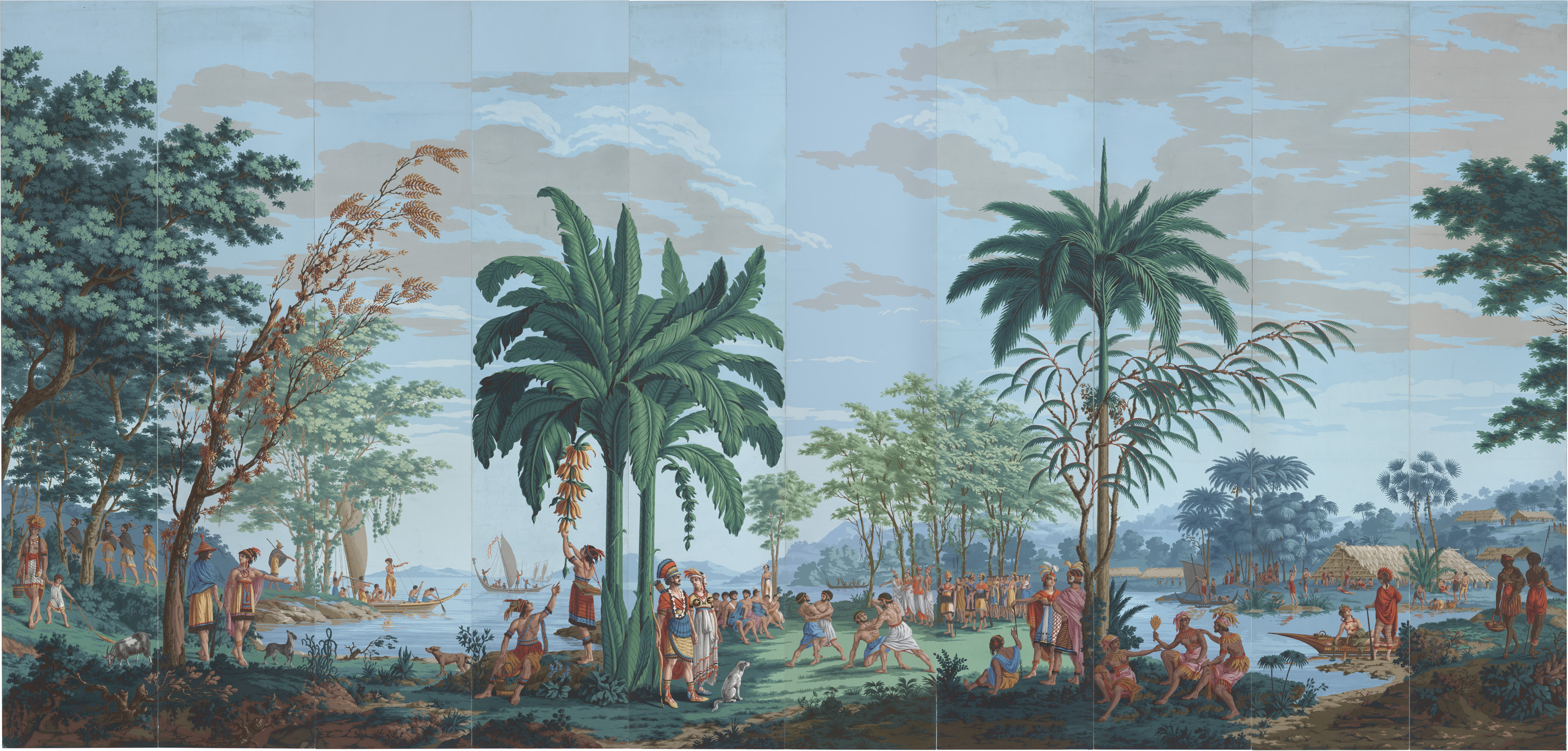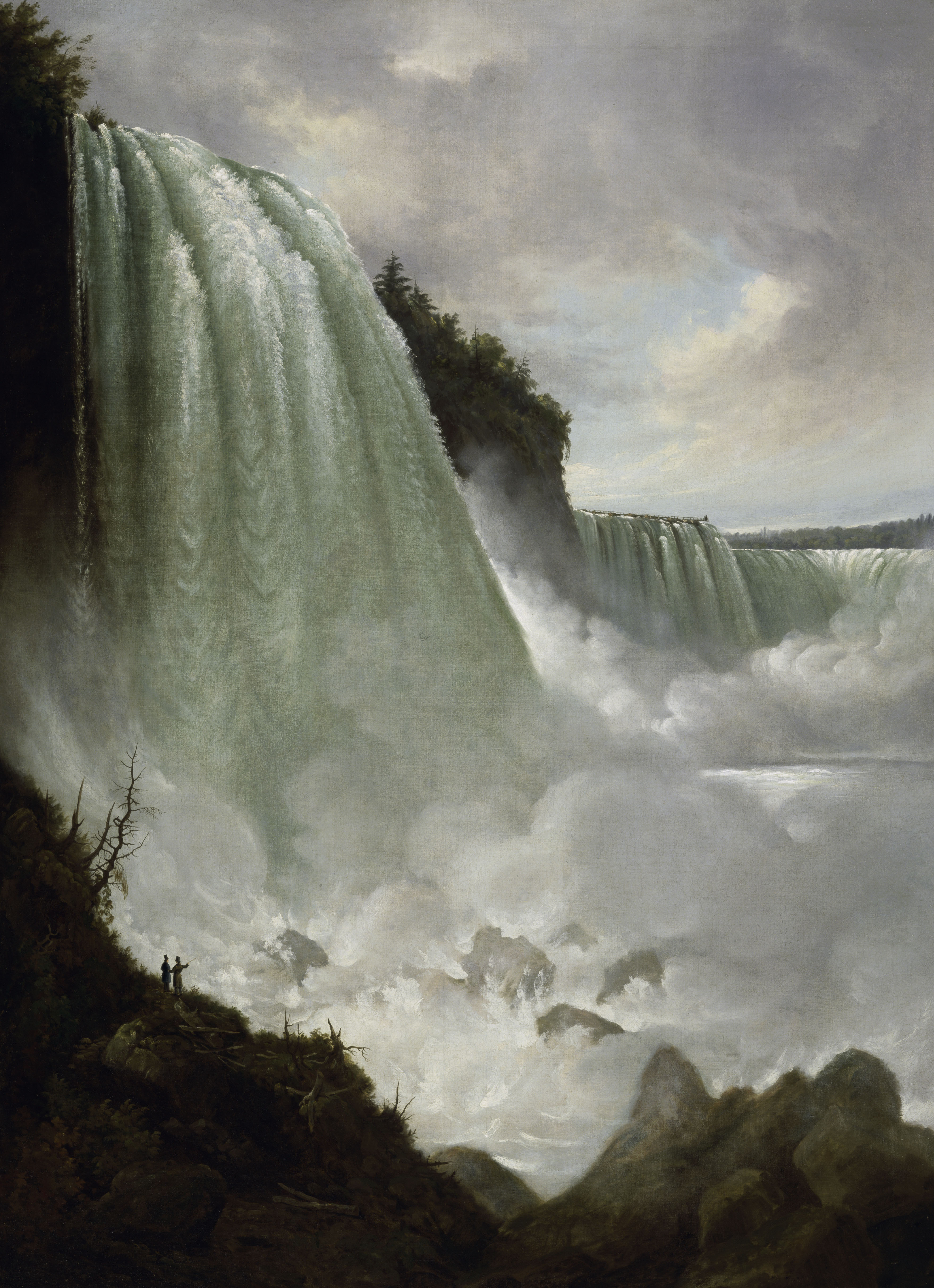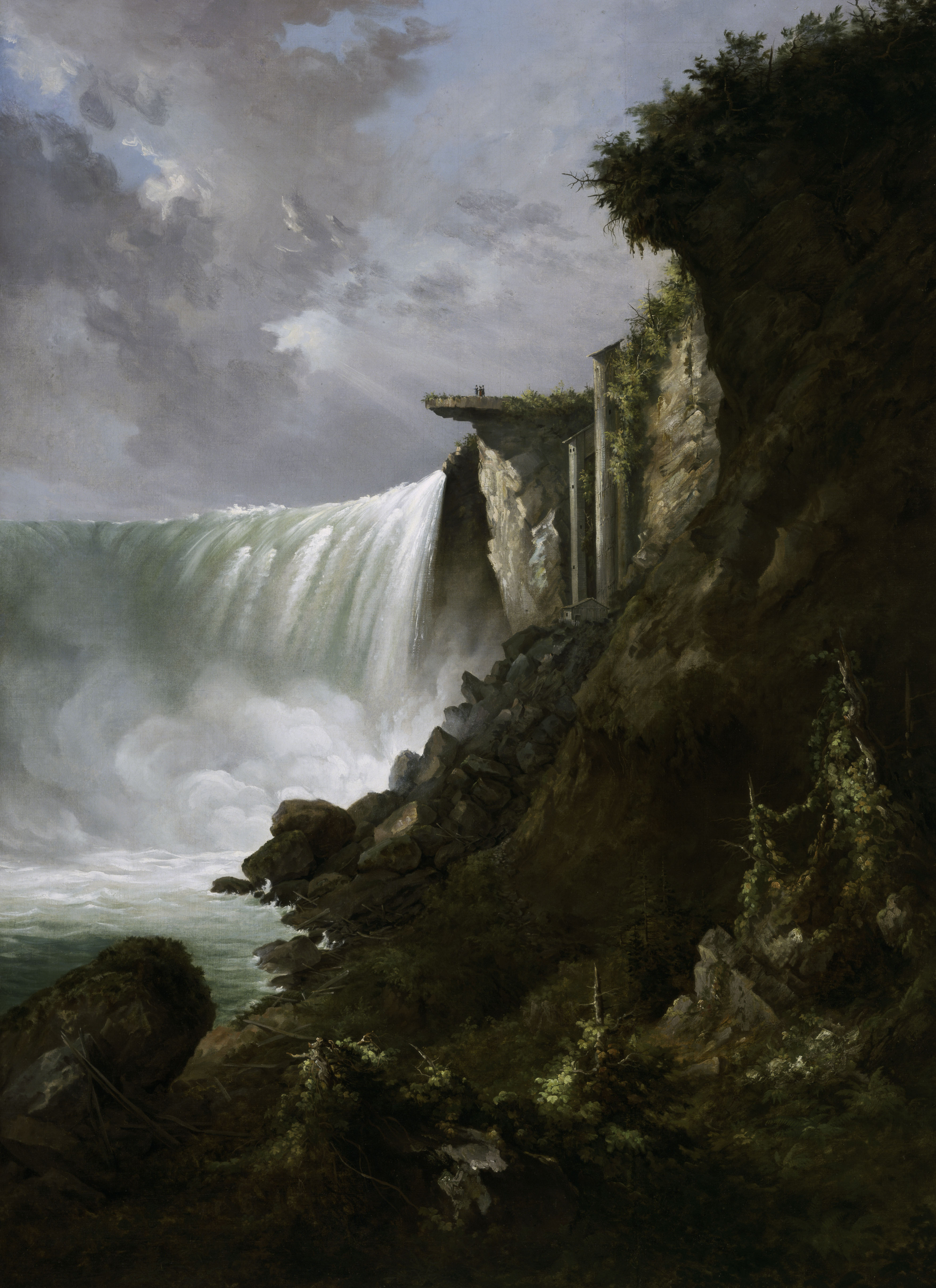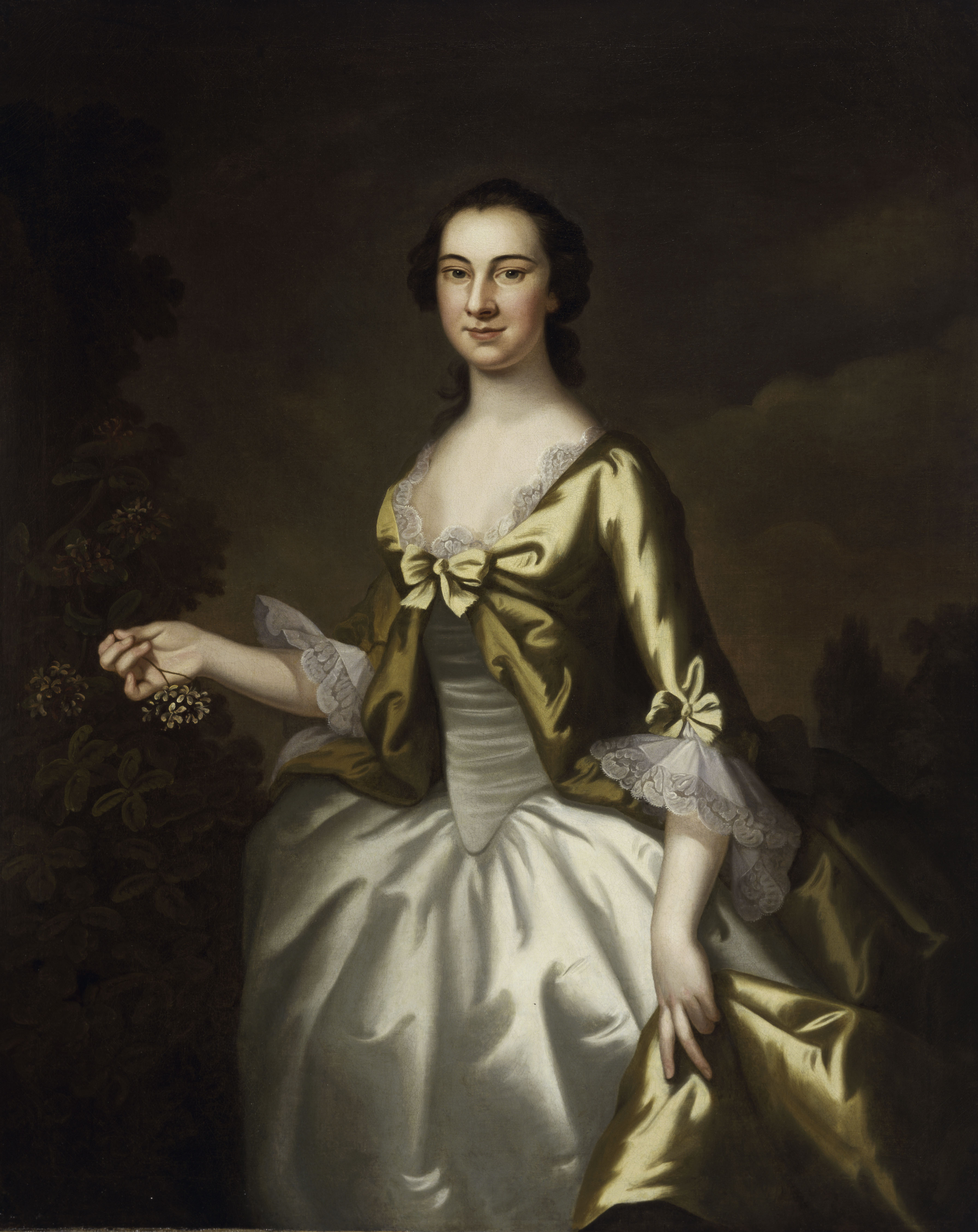Sauvages de la Mer Pacifique (Savages of the Pacific Ocean)

What can we learn from historical inaccuracies?
Exhibited in Paris in 1804, this wallpaper is believed to be one of the first panoramic wallpapers. The production process for such a large set of wallpapers could take many months and use more than 1,000 hand-cut woodblocks. Made in individual panels, the flexible design can accommodate various arrangements and room shapes. The printer Dufour advertised his wallpaper as both decorative and educational, offering “lessons in history and geography” to his European customers.




